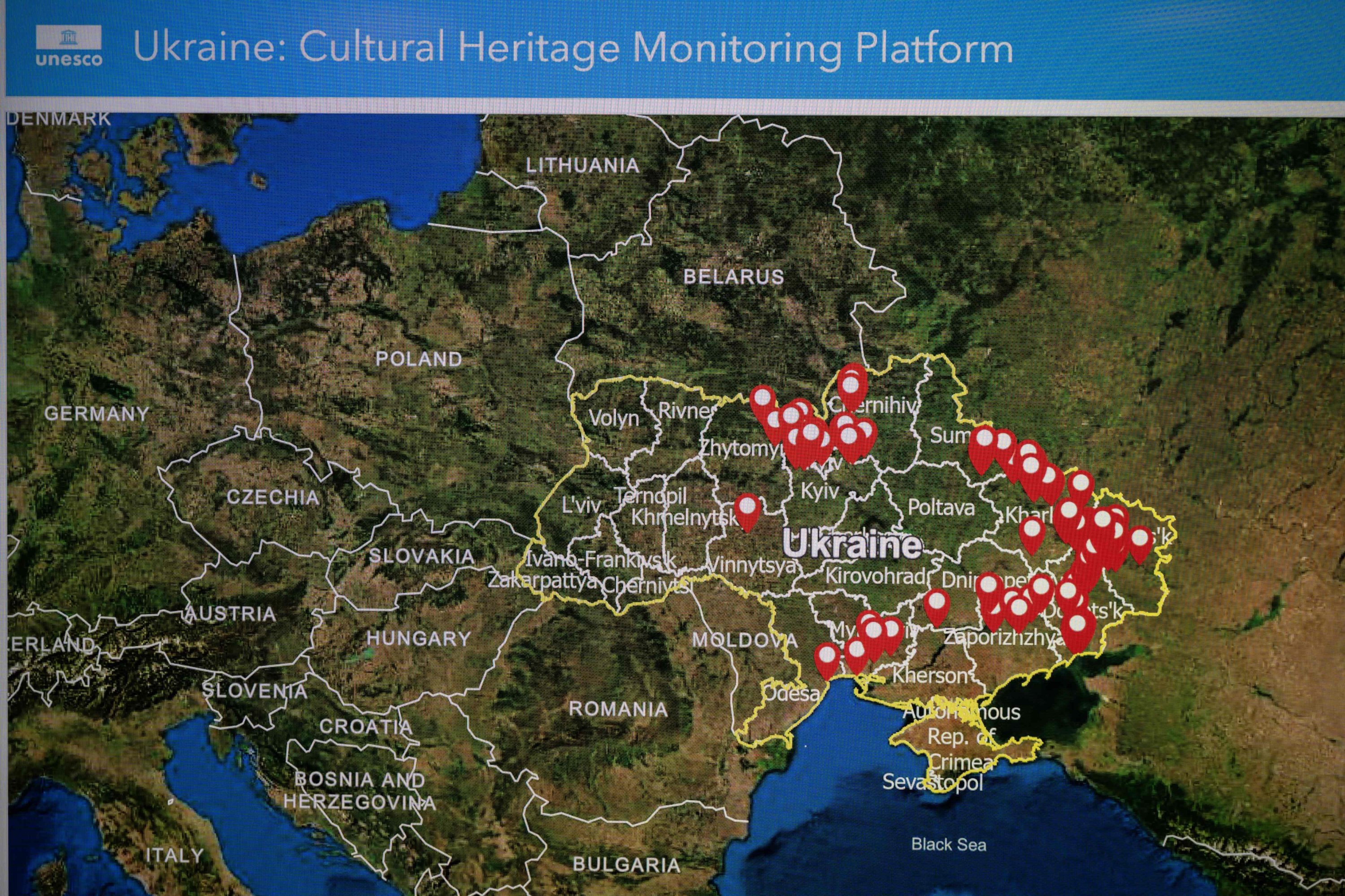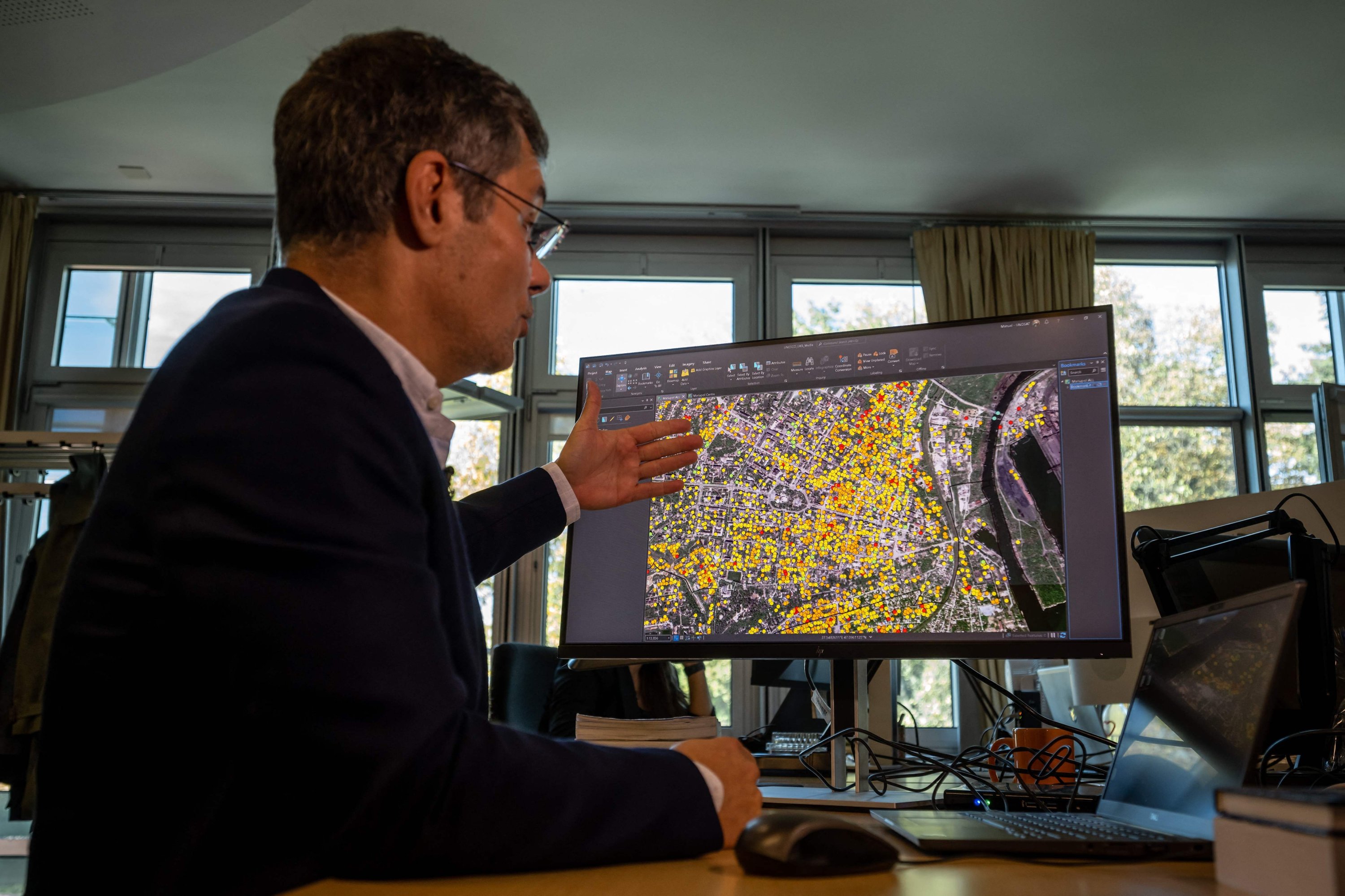© Turkuvaz Haberleşme ve Yayıncılık 2024
The United Nations is using before-and-after satellite imagery to monitor the cultural destruction inflicted by Russia's war in Ukraine, announcing Wednesday it will launch its tracking platform publicly within weeks.
The U.N.'s culture agency UNESCO said it had verified damage to 207 cultural sites in Ukraine since the Russian invasion began on February 24.
They include 88 religious sites, 15 museums, 76 buildings of historical and or artistic interest, 18 monuments, and 10 libraries.
The worst-affected regions are in eastern Ukraine and around the capital, with Donetsk region having 59 verified damaged cultural sites, followed by Kharkiv with 51, Kyiv with 30 and Luhansk with 25.

"Our conclusion is it's bad, and it may continue to get even worse," UNESCO's cultural and emergencies director Krista Pikkat told reporters at a briefing in Geneva.
"Cultural heritage is very often collateral damage during wars but sometimes it's specifically targeted as it's the essence of the identity of countries."
UNESCO – the U.N. Educational, Scientific and Cultural Organization – has joined forces with the U.N. Satellite Centre UNOSAT to produce the platform. Based on reports from the field, UNESCO sends a list of potentially damaged sites to UNOSAT. It then asks for satellite images from commercial suppliers.
UNESCO pays for the very high-resolution images bought from Maxar and Airbus, costing around $10 per square kilometer.
A small team of UNOSAT experts studies the difference in before-and-after pictures. "We conduct daily analysis on Ukraine using satellite images to have a better understanding of the situation on the ground," Manuel Fiol, the senior imagery analyst, told Agence France-Presse (AFP).
The team matches up the images, analyses the degree of damage, and can give a time window in which the damage took place. Whether an image can be obtained depends on the weather, with the Ukraine work expected to be harder during the coming winter, as cloud cover sets in, while snow can blanket a site.
The affected locations are marked on a map and the platform has a searchable database. The platform does not attribute blame for the damage.
"We are not in the business of saying who did what and why," said Pikkat.
"Our primary responsibility is to make sure that we have information available about the sites and the situation they're in, to be ready for recovery," she told AFP.
"But we know that in previous circumstances this documentation has been used also by the country authorities if they want to look into allegations of war crimes."
Pikkat said the platform was a pilot experiment to see how UNESCO could usefully compile such information, and in the longer term, potentially widen its scope beyond Ukraine and have it as a real-time, interactive tool for experts to work with. So far in the war, none of the seven world heritage sites in Ukraine have been damaged.

Earlier this month, Ukrainian President Volodymyr Zelenskyy officially requested that UNESCO add the historic port city of Odessa to its World Heritage List in a bid to protect it from Russian air strikes.
UNESCO is working with the Odessa authorities to make sure that its main monuments and cultural sites are marked with a blue shield –the emblem used during armed conflicts to denote a cultural property that should be protected.
UNESCO is also working with museums and collections in Ukraine to try to combat the threat of looting – a common problem in war.
The agency has been discussing with Kyiv the possibility of removing cultural heritage items from the country for the duration of the war, but Pikkat acknowledged that it was a "difficult call," with the first move being to evacuate collections to safer parts of Ukraine
